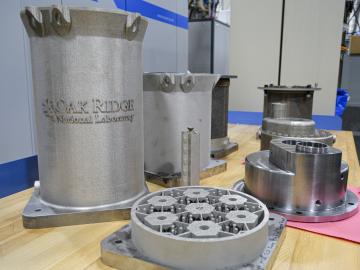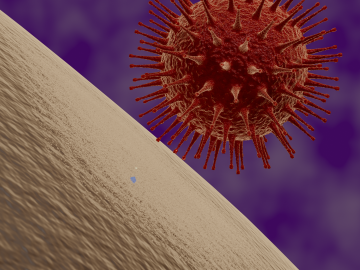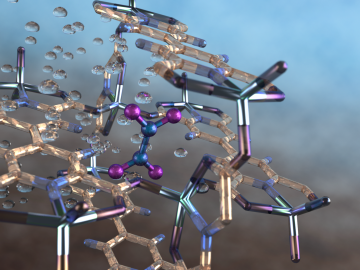
Filter News
Area of Research
- Advanced Manufacturing (2)
- Biology and Environment (25)
- Computer Science (1)
- Energy Science (35)
- Fuel Cycle Science and Technology (1)
- Fusion and Fission (11)
- Fusion Energy (1)
- Isotope Development and Production (1)
- Isotopes (3)
- Materials (25)
- Materials for Computing (3)
- National Security (13)
- Neutron Science (13)
- Nuclear Science and Technology (7)
- Sensors and Controls (1)
- Supercomputing (37)
News Type
News Topics
- (-) Advanced Reactors (12)
- (-) Artificial Intelligence (35)
- (-) Big Data (8)
- (-) Coronavirus (17)
- (-) Environment (38)
- (-) Frontier (16)
- (-) Grid (16)
- (-) Microscopy (17)
- (-) Nuclear Energy (28)
- (-) Security (12)
- 3-D Printing/Advanced Manufacturing (48)
- Bioenergy (25)
- Biology (26)
- Biomedical (17)
- Biotechnology (10)
- Buildings (15)
- Chemical Sciences (35)
- Clean Water (2)
- Composites (12)
- Computer Science (63)
- Critical Materials (11)
- Cybersecurity (17)
- Education (3)
- Element Discovery (1)
- Energy Storage (43)
- Exascale Computing (13)
- Fossil Energy (1)
- Fusion (17)
- High-Performance Computing (32)
- Isotopes (20)
- ITER (2)
- Machine Learning (13)
- Materials (60)
- Materials Science (56)
- Mercury (2)
- Microelectronics (1)
- Molten Salt (3)
- Nanotechnology (29)
- National Security (18)
- Neutron Science (54)
- Partnerships (31)
- Physics (26)
- Polymers (13)
- Quantum Computing (13)
- Quantum Science (31)
- Simulation (10)
- Space Exploration (3)
- Statistics (1)
- Summit (22)
- Transportation (26)
Media Contacts

Juergen Rapp, a distinguished R&D staff scientist in ORNL’s Fusion Energy Division in the Nuclear Science and Engineering Directorate, has been named a fellow of the American Nuclear Society

For the second year in a row, a team from the Department of Energy’s Oak Ridge and Los Alamos national laboratories led a demonstration hosted by EPB, a community-based utility and telecommunications company serving Chattanooga, Tennessee.

Researchers at the Department of Energy’s Oak Ridge National Laboratory are refining their design of a 3D-printed nuclear reactor core, scaling up the additive manufacturing process necessary to build it, and developing methods

OAK RIDGE, Tenn., May 5, 2020 — By 2050, the United States will likely be exposed to a larger number of extreme climate events, including more frequent heat waves, longer droughts and more intense floods, which can lead to greater risks for human health, ecosystem stability and regional economies.

UT-Battelle, the managing contractor of Oak Ridge National Laboratory for the U.S. Department of Energy, has donated $10,000 to Second Harvest Food Bank of East Tennessee, providing 30,000 meals for those in need.

Researchers at the Department of Energy’s Oak Ridge National Laboratory have used Summit, the world’s most powerful and smartest supercomputer, to identify 77 small-molecule drug compounds that might warrant further study in the fight

OAK RIDGE, Tenn., Feb. 19, 2020 — The U.S. Department of Energy’s Oak Ridge National Laboratory and the Tennessee Valley Authority have signed a memorandum of understanding to evaluate a new generation of flexible, cost-effective advanced nuclear reactors.
A team of scientists led by Oak Ridge National Laboratory found that while all regions of the country can expect an earlier start to the growing season as temperatures rise, the trend is likely to become more variable year-over-year in hotter regions.

Gina Tourassi has been appointed as director of the National Center for Computational Sciences, a division of the Computing and Computational Sciences Directorate at Oak Ridge National Laboratory.

An international team of scientists, led by the University of Manchester, has developed a metal-organic framework, or MOF, material


